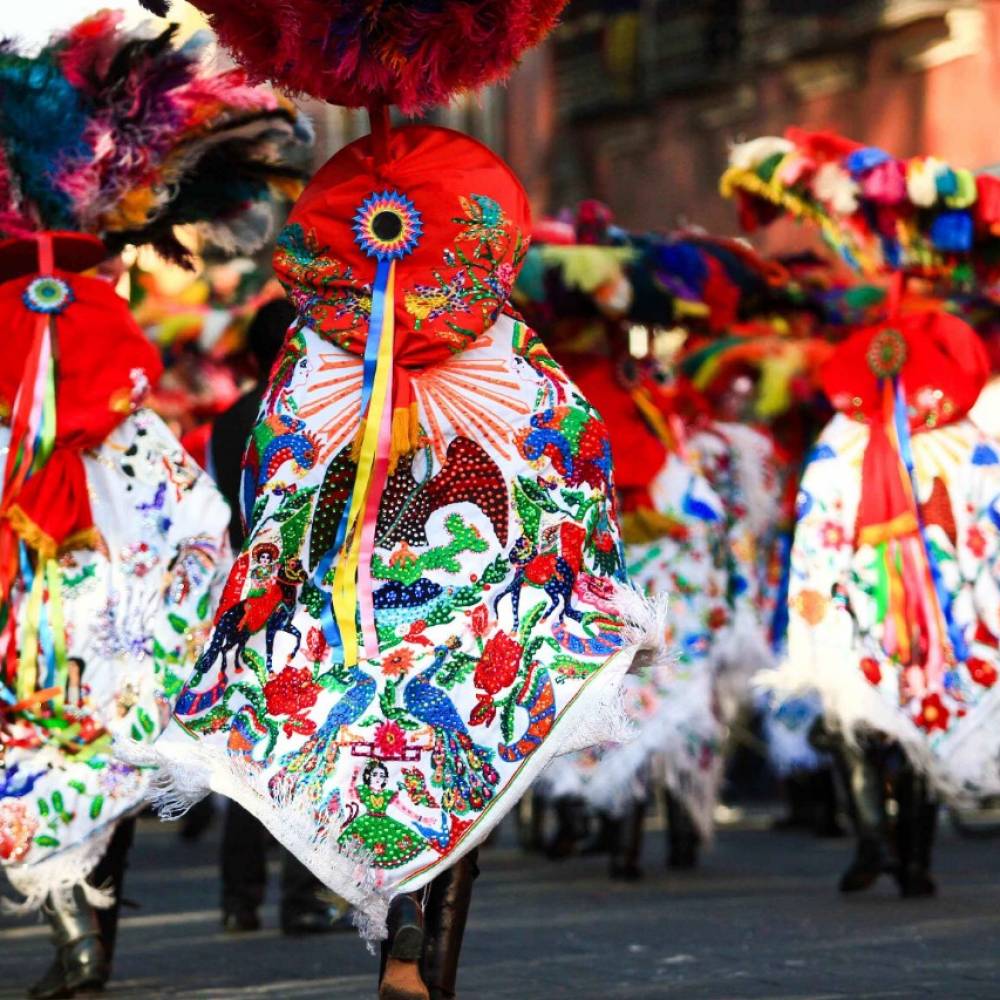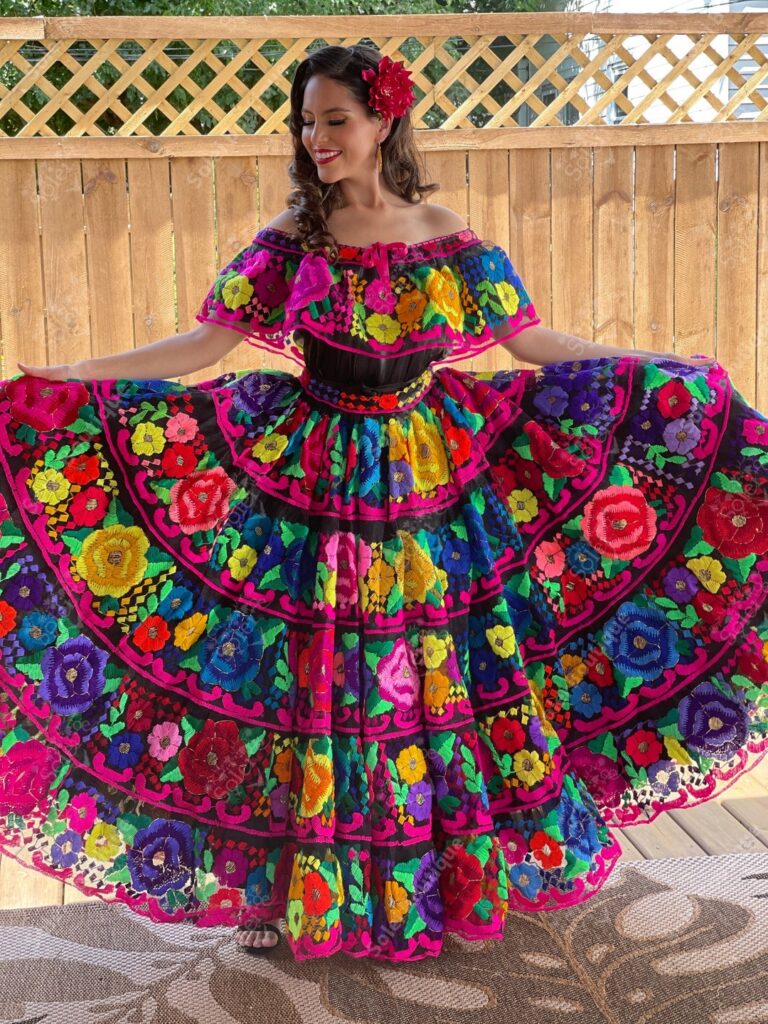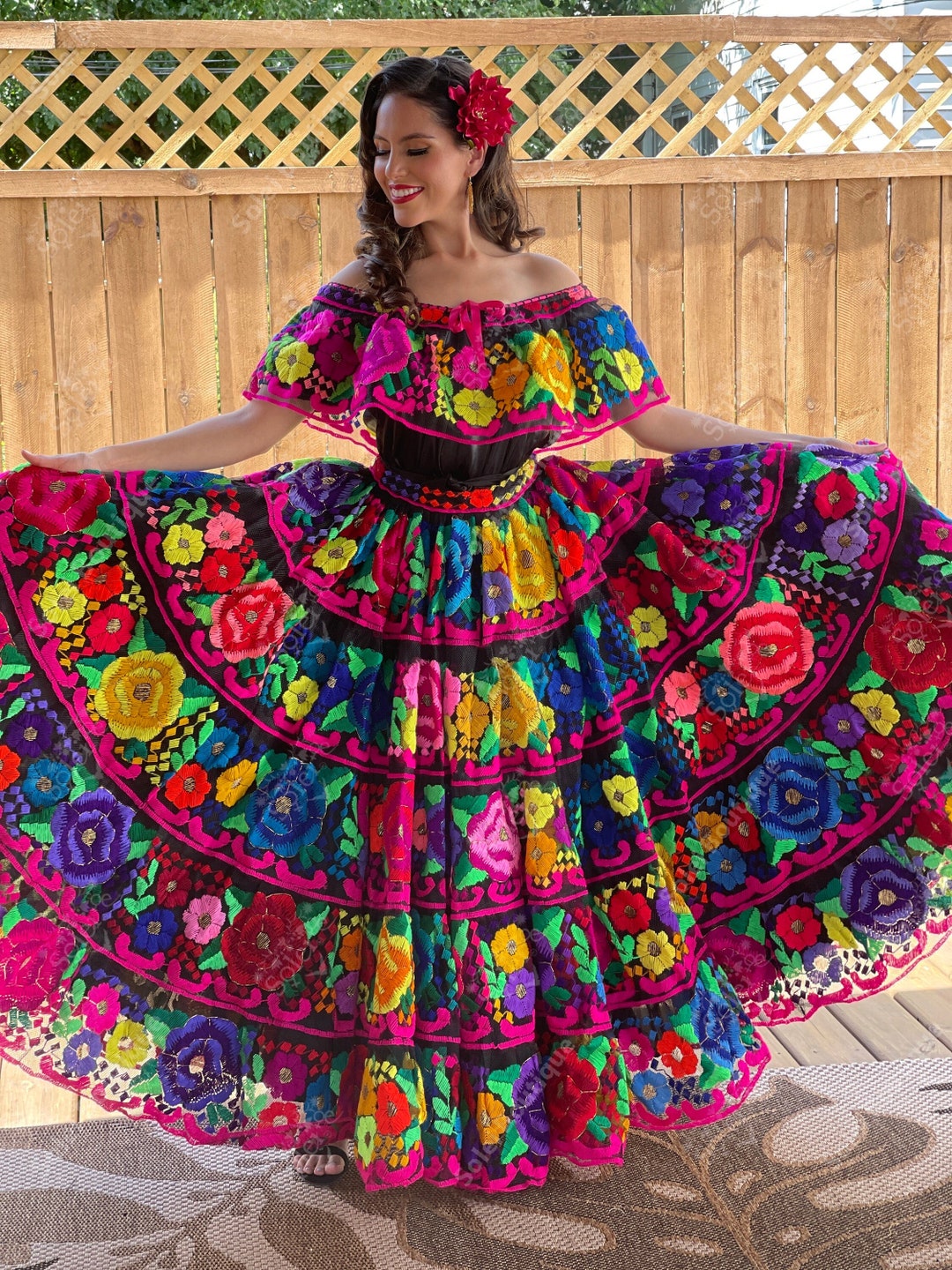Have you ever wondered about the vibrant culture of Mexico and its traditional dress? Well, get ready to dive into a colorful journey through Mexico’s unique fashion! In this article, we’ll explore the fascinating history and significance behind the traditional dress of Mexico, also known as traje or huipil. Get ready to be captivated by the vibrant colors, intricate designs, and rich cultural heritage that makes Mexican traditional dress so enchanting.
When it comes to Mexico tourism, the country has so much to offer. From its stunning beaches to historical attractions, there is something for everyone. But one aspect of Mexico’s culture that truly stands out is its traditional dress. The colorful and intricate designs of Mexican huipils and trajes have become iconic representations of Mexico’s vibrant culture. These traditional dresses are not only a form of clothing but also a reflection of Mexican history, craftsmanship, and cultural diversity.
Throughout the different regions of Mexico, you’ll find unique styles of traditional dress that vary in colors, patterns, and accessories. From the embroidered flowers and geometric designs of Oaxaca to the bright and flowing skirts of Veracruz, each region showcases its distinct cultural identity through traditional dress. So, whether you’re planning a trip to Mexico or simply curious about its rich cultural heritage, stay tuned for the rest of the article to learn more about the colorful traditional dress of Mexico and its significance in Mexican culture.

Introduction
Mexico is a country known for its vibrant culture, rich history, and diverse traditions. One of the most captivating aspects of Mexican culture is its traditional dress. The colorful and intricate garments worn by Mexicans reflect not only their identity but also the country’s heritage. In this article, we will explore the importance of traditional dress in Mexican culture, its origins, distinctive features, regional variations, and much more. So, come along on this cultural journey as we dive into the vibrant world of Mexican traditional dress.
The Significance of Traditional Dress in Mexican Identity
Traditional dress plays a vital role in shaping Mexican identity. The clothing choices made by individuals are often influenced by their roots, social status, and personal beliefs. By adorning themselves in traditional attire, Mexicans proudly display their connection to their ancestors and their cultural heritage.
Traditional Dress as a Reflection of Mexico’s History and Heritage
The garments worn by Mexicans are deeply rooted in the country’s history. The influence of pre-Hispanic cultures is evident in the colorful textiles, intricate embroidery, and symbolic patterns seen in traditional dress. Additionally, the attire worn during the Spanish colonial era has also left a lasting impact on Mexican fashion. The fusion of indigenous and European styles is a testament to the country’s diverse cultural influences.
The Cultural Significance of Traditional Dress in Celebrations and Festivals
Traditional dress takes center stage during festivals and celebrations in Mexico. These vibrant garments are often worn during religious processions, dances, and other cultural events. For example, during the Day of the Dead celebrations, Mexicans honor their ancestors by wearing traditional attire adorned with intricate embroidery and symbols. The presence of traditional dress in these festivities further reinforces its importance in Mexican culture.

The Origins of Traditional Mexican Dress
To understand the evolution of Mexican traditional dress, we need to delve into its origins. The clothing choices made by early indigenous civilizations and the influence of Spanish colonialism have shaped the garments worn by Mexicans today.
Pre-Hispanic Influences on Traditional Mexican Clothing
Before the arrival of Spanish colonizers, Mexico was home to remarkable civilizations such as the Aztecs, Mayans, and Zapotecs. These ancient cultures had a profound impact on the clothing choices of their descendants. The use of natural dyes, vibrant colors, and intricate textile designs can all be traced back to the pre-Hispanic era. Traditional attire from this period often included garments made from cotton, agave fibers, and animal hides.
Influence of Spanish Colonialism on Traditional Dress
The arrival of Spanish conquistadors in the 16th century introduced new garments and textiles to Mexico. The Spanish colonizers brought with them European fashion trends, including intricate lacework, silk, and velvet fabrics. These materials were integrated into the existing indigenous clothing styles, giving birth to a unique fusion of indigenous and European fashion.
Incorporation of Indigenous and European Styles in Mexican Dress
Mexican traditional dress is a beautiful integration of indigenous and European influences. The blending of styles can be seen through the use of indigenous textile techniques such as backstrap weaving and European dress elements like ruffled skirts and lace details. This cultural amalgamation is a testament to Mexico’s history and the resilience of its people.
Traditional Dress Varieties in Different Mexican Regions
Mexico is a country known for its regional diversity. Each region has its traditional dress that reflects the unique customs and traditions of the local communities. Let’s explore some of the iconic traditional dress varieties found in different parts of Mexico.
Oaxaca: Traditional Dress of the Zapotec and Mixtec People
In the state of Oaxaca, the traditional dress of the Zapotec and Mixtec people is renowned for its vibrant colors and intricate embroidery. Women wear a traditional blouse called a huipil, which is adorned with colorful geometric patterns and floral motifs. The skirt, known as a enredo, is usually woven with intricate designs that symbolize elements of nature and cultural heritage.
Chiapas: Vibrant Indigenous Clothing of the Mayan Communities
Chiapas, located in southern Mexico, is home to several indigenous communities, including the Mayans. The traditional clothing of the Mayan people in Chiapas is characterized by its vibrant colors and intricate handwoven textiles. Women wear a huipil, which is often adorned with intricate brocade work and embroidery. The skirt, called a enredo, is typically made from handwoven fabric and is secured by a woven belt.
Yucatan: Traditional Clothing of the Yucatec Maya and Mestizo Communities
The Yucatan region is renowned for its traditional dress worn by the Yucatec Maya and Mestizo communities. Women in Yucatan often wear a traditional dress called a hipil, which is a loose-fitting white cotton garment adorned with delicate floral embroidery. The embroidery on the hipil represents various elements of nature, such as flowers, birds, and insects.

Distinctive Features and Elements of Traditional Mexican Clothing
Traditional Mexican clothing is characterized by its distinctive features and elements that make it instantly recognizable. Let’s explore some of these features that set Mexican dress apart from other cultural attire.
Embroidery and Textile Artistry in Traditional Dress
Embroidery is a significant aspect of traditional Mexican dress. Skilled artisans meticulously create intricate and colorful designs using techniques passed down through generations. These exquisite embroideries often depict cultural symbols, nature-inspired patterns, and historical narratives. The embroidery is typically done by hand, showcasing Mexico’s rich textile artistry.
Use of Vibrant Colors and Symbolism in Mexican Clothing
Mexican dress is renowned for its use of vibrant colors. From bold reds and blues to vivid yellows and greens, the color palette reflects the country’s lively culture. Each color holds symbolic meaning within Mexican society. For example, red represents love and passion, while blue symbolizes purity and loyalty. The use of these vibrant colors adds to the visual appeal and cultural significance of traditional Mexican attire.
Traditional Accessories and Jewelry
Completing the traditional Mexican dress are the accessories and jewelry worn by both men and women. Women often adorn themselves with vibrant ribbons, shawls, and rebozos, a type of long rectangular scarf. Jewelry, such as silver earrings, necklaces, and bracelets, adds a touch of elegance and enhances the overall traditional look.
Traditional Dress as an Expression of Gender and Social Status
Traditional Mexican dress serves as an avenue for expressing gender roles and social status within the society. Certain garments and accessories are associated with specific genders and mark individual’s social positions.
Gender Roles Reflected in Traditional Clothing
In Mexican culture, traditional dress often reflects gender roles. Women’s attire is characterized by the use of vibrant colors, intricate embroidery, and flowing garments. Men’s clothing, on the other hand, tends to be more simplistic, focusing on comfortable and practical attire. These gender distinctions are ingrained in Mexican society and are transmitted through generations.
Traditional Dress as a Symbol of Social Status and Identity
Traditional dress also plays a significant role in signifying social status and identity. The quality and intricacy of the garments, the choice of materials, and the accessories worn can all indicate an individual’s social standing. For example, the ornate embroidery and delicate lacework seen in higher-end traditional dresses are often associated with more affluent communities or special occasions.
Evolution of Traditional Dress and Changing Gender Norms
Over the years, traditional Mexican dress has evolved, reflecting the changing gender norms in society. More women are embracing traditionally masculine attire, such as pants and shirts, while men are incorporating elements of traditional women’s clothing into their attire. This evolution challenges traditional gender norms and emphasizes the importance of individual expression and personal style in Mexican fashion.

Modern Influences on Traditional Mexican Dress
Traditional Mexican dress has not been immune to modern influences and fashion trends. The globalized world and changing tastes have impacted the way traditional clothing is perceived and worn in contemporary society.
Fashion and Global Trends Impacting Traditional Dress
Fashion and global trends have had a considerable impact on traditional Mexican dress. The rise of fast fashion and the proliferation of Western clothing styles have influenced the choices people make when it comes to traditional attire. Younger generations are often seen incorporating modern elements into their traditional dress, creating a fusion of traditional and contemporary fashion.
Revival and Preservation Efforts of Traditional Clothing
Despite the influence of global trends, there is a growing movement to revive and preserve traditional Mexican dress. Organizations, artisans, and fashion designers are actively working to safeguard the cultural heritage associated with traditional clothing. Through initiatives such as workshops, exhibitions, and educational programs, efforts are being made to ensure the continued appreciation and recognition of traditional Mexican attire.
Contemporary Interpretations and Adaptations of Mexican Dress
Contemporary interpretations and adaptations of Mexican dress have emerged, allowing for further exploration of tradition and innovation. Fashion designers often draw inspiration from traditional Mexican garments, incorporating elements such as embroidery, vibrant colors, and silhouettes into their collections. These modern interpretations serve as a bridge between the past and the present, honoring Mexico’s rich cultural heritage while embracing contemporary fashion trends.
The Influence and Adaptation of Mexican Dress in Popular Culture
Mexican traditional dress has not only shaped Mexican culture but also found its way into popular culture around the world. From film and television to the world of fashion, Mexican dress continues to captivate and inspire.
Mexican Dress in Film and Television
Mexican traditional dress has made appearances in numerous films and television shows, both in Mexico and internationally. It has become synonymous with Mexican culture and is often used to establish the visual identity of Mexican characters. Films such as “Frida” and “Coco” have showcased the beauty and cultural significance of Mexican dress to a global audience.
Fashion Designers Inspired by Mexican Traditional Dress
Fashion designers from around the world have drawn inspiration from Mexican traditional dress. Influential designers such as Christian Dior and Yves Saint Laurent have incorporated elements of traditional Mexican attire into their collections. These adaptations not only pay homage to the country’s rich cultural heritage but also bring Mexican fashion to the forefront of the global fashion stage.
The Role of Mexican Dress in Festivals and Events
Mexican traditional dress takes center stage in festivals and events that celebrate Mexican culture. From the Guelaguetza Festival in Oaxaca to the Day of the Dead celebrations nationwide, traditional attire is proudly worn by participants. The vibrant colors, unique designs, and symbolic elements of Mexican dress contribute to the festive atmosphere and showcase the cultural richness of Mexico.

Preserving and Promoting Traditional Mexican Dress
Preserving and promoting traditional Mexican dress is of paramount importance to safeguard the country’s cultural heritage. Various initiatives and institutions are dedicated to ensuring the continued appreciation and perpetuation of traditional attire.
Museums and Exhibitions Showcasing Traditional Dress
Museums in Mexico and around the world play a significant role in showcasing traditional Mexican dress. By curating exhibitions and preserving historical garments, these institutions provide opportunities for people to learn about the cultural significance and artistic craftsmanship behind traditional attire. Visitors can marvel at the intricate embroideries, vibrant colors, and evolving styles of Mexican dress throughout history.
Government Initiatives to Preserve Traditional Clothing
The Mexican government recognizes the importance of preserving traditional clothing. Through various initiatives, including subsidies for artisans, funding for cultural events, and the designation of traditional clothing as national treasures, the government is actively working towards the preservation and promotion of traditional Mexican dress. These efforts are vital in ensuring the continuity and appreciation of Mexican cultural heritage.
Promoting Sustainable and Ethical Fashion Practices in Mexico
Another aspect of preserving traditional Mexican dress is promoting sustainable and ethical fashion practices. By supporting local artisans and encouraging the use of natural materials, the fashion industry can contribute to the preservation of Mexican cultural traditions. Additionally, initiatives focused on fair trade practices and environmental sustainability can help protect the communities and resources integral to the production of traditional attire.
Exploring Traditional Dress through Festivals and Celebrations
Festivals and celebrations offer a unique opportunity to delve into the world of traditional Mexican dress. Let’s explore some of the most iconic festivals and the traditional attire associated with them.
Day of the Dead: Traditional Dress and Symbolism
The Day of the Dead, or Dia de los Muertos, is one of Mexico’s most famous celebrations. This vibrant festival honors deceased loved ones and is characterized by colorful altars, sugar skulls, and marigold flowers. During the festivities, participants often wear traditional clothing adorned with intricate embroidery and floral designs. The clothing serves as a visual representation of the connection between the living and the deceased.
Guelaguetza Festival and the Rich Oaxacan Clothing
The Guelaguetza Festival in Oaxaca showcases the rich cultural heritage of the region, including its traditional dress. Participants don traditional garments, such as the brightly colored huipils adorned with elaborate embroidery. The festival allows both locals and visitors to experience the beauty and diversity of Oaxaca’s traditional clothing, reaffirming its importance in Mexican culture.
Fiesta de la Virgen de Guadalupe: Religious Dress and Devotion
The Fiesta de la Virgen de Guadalupe is a significant religious celebration in Mexico, honoring the country’s patron saint. During this festival, participants pay homage to the Virgen de Guadalupe by wearing traditional religious garments. The attire often features a blend of indigenous and European styles, showcasing the fusion of faith and cultural heritage in Mexican dress.
The Cultural Impact and Appreciation of Mexican Traditional Dress
The cultural impact and appreciation of Mexican traditional dress extend beyond the borders of Mexico itself. Let’s explore the influence of Mexican dress both in the realm of cultural tourism and in the global fashion industry.
Cultural Tourism and the Interest in Mexican Traditional Clothing
Mexican traditional dress has become a significant draw for cultural tourism in Mexico. Visitors flock to markets and festivals to experience the vibrant colors, intricate designs, and cultural diversity represented through traditional attire. Tourists are eager to learn about the stories behind the garments, support local artisans, and immerse themselves in the beauty of Mexican culture.
The Influence of Mexican Dress on Global Fashion
The influence of Mexican dress on the global fashion industry is undeniable. Designers and fashion houses draw inspiration from Mexican traditional attire, incorporating elements such as embroidery, vibrant colors, and silhouettes into their collections. This cultural exchange not only exposes the world to the beauty of Mexican fashion but also highlights the importance of preserving and promoting traditional dress.
The Cultural Exchange and Appreciation of Mexican Dress
Mexican traditional dress has fostered a cultural exchange and appreciation among people from diverse backgrounds. Through festivals, exhibitions, and cultural events, individuals have the opportunity to learn about and celebrate Mexican cultural heritage. This exchange fosters mutual understanding and appreciation, cultivating a global community that respects and values cultural diversity.
The Future of Mexican Traditional Dress
As we look ahead, we consider the challenges and opportunities in preserving, innovating, and evolving Mexican traditional dress.
Challenges and Opportunities in Preserving Traditional Dress
Preserving traditional Mexican dress faces challenges in the modern world. The rise of fast fashion, globalization, and changing societal norms present obstacles to the continued appreciation and transmission of traditional attire. However, there are also opportunities to adapt, innovate, and find new ways to showcase the beauty and cultural significance of Mexican dress.
Innovation and Evolution of Traditional Dress in Modern Society
Innovation and evolution play a crucial role in ensuring the survival of traditional Mexican dress. Artists, fashion designers, and artisans are finding ways to bring traditional garments into the modern era while respecting cultural heritage. Exploring new techniques, materials, and designs allows for a renewed appreciation of Mexican dress and ensures its relevance in contemporary society.
Educating and Empowering the Next Generation of Artisans
Education and empowerment are vital for the future of traditional Mexican dress. By passing down knowledge and skills to the next generation of artisans, the traditions and techniques used in creating traditional attire can be preserved. Supporting and empowering young artisans ensures that the craftsmanship and artistry associated with Mexican dress continue to thrive for years to come.
The Vibrant World of Mexican Traditional Dress
In conclusion, the traditional dress of Mexico is a testament to the country’s vibrant culture, rich history, and diverse traditions. From its origins rooted in pre-Hispanic civilizations to its contemporary adaptations, Mexican dress continues to captivate and inspire. The colorful textiles, intricate embroidery, and symbolic patterns found in traditional attire reflect the identity, heritage, and traditions of Mexico’s diverse communities. As we celebrate the richness and beauty of Mexican clothing, we honor the resilience and artistic craftsmanship of the Mexican people. Through the preservation and promotion of traditional dress, we embrace cultural diversity and ensure that Mexico’s vibrant culture continues to thrive for generations to come.
